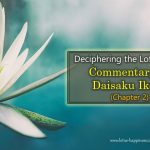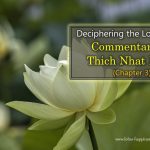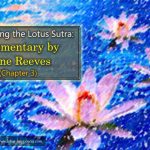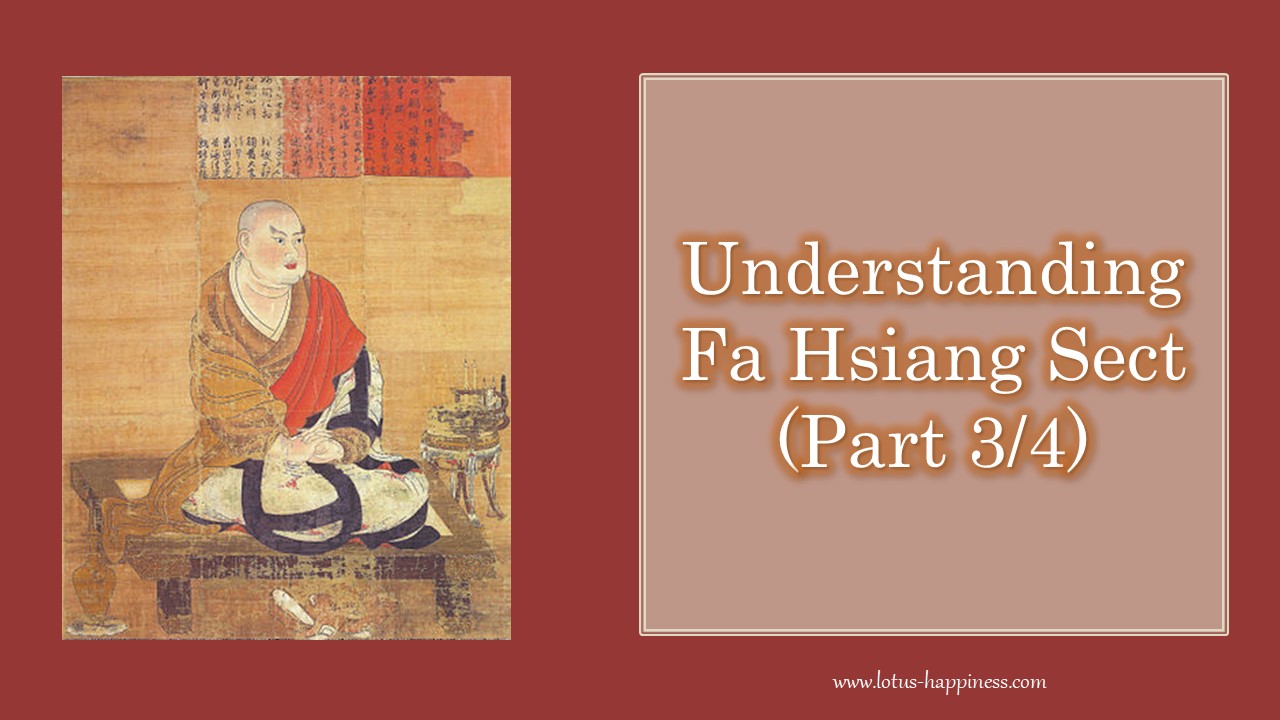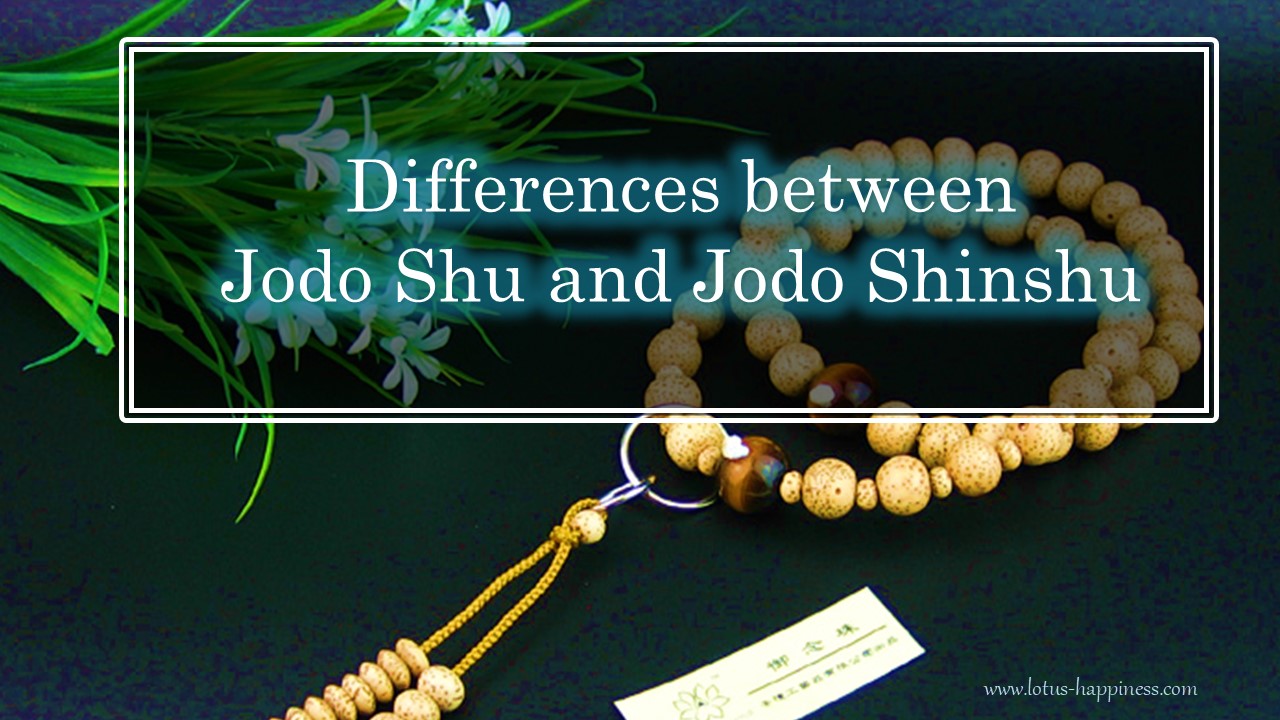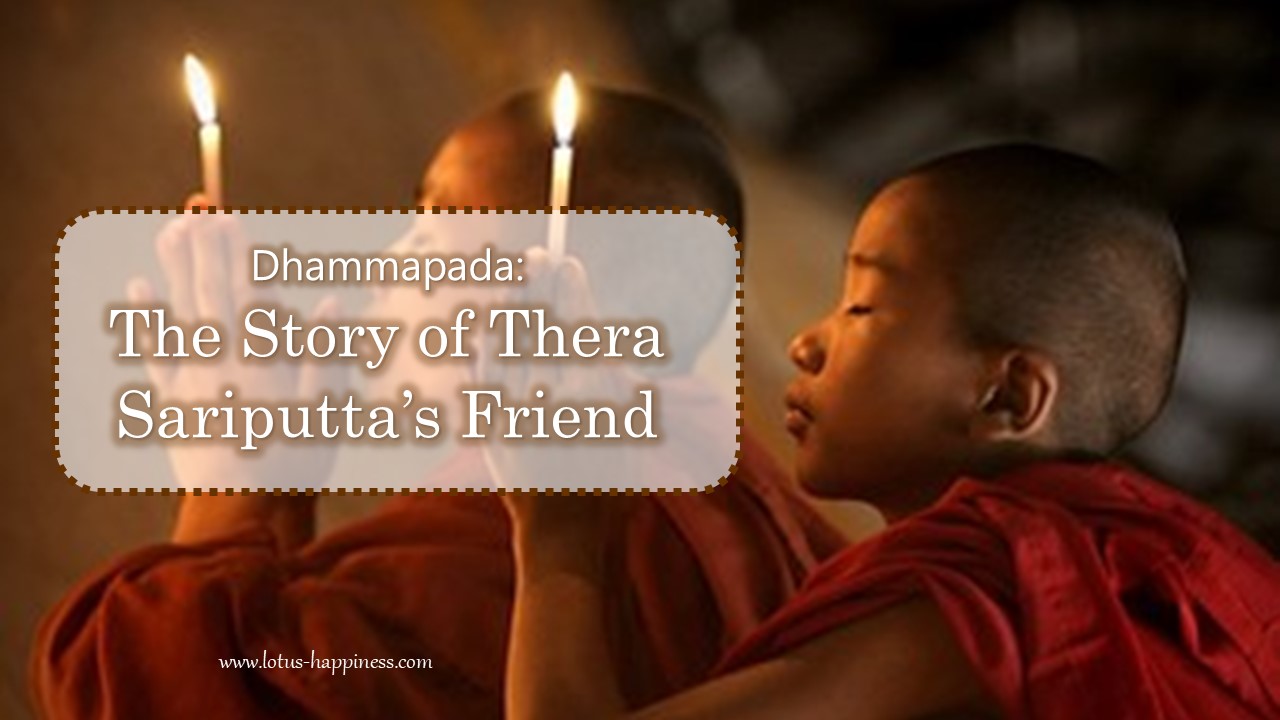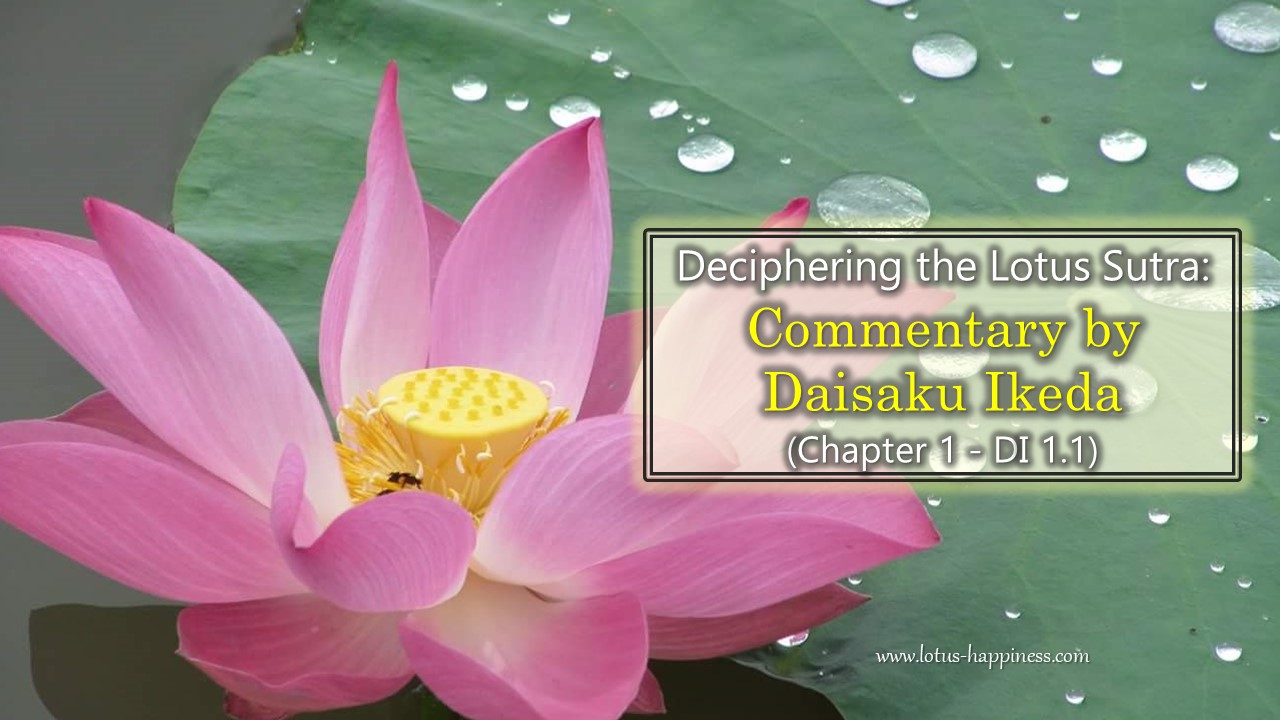
Deciphering the Lotus Sutra:
Commentary by Daisaku Ikeda (Chapter 1 – DI 1.1)
“This is What I Heard”: The Pulse of the Oneness of Mentor and Disciple
#1
“The entire cosmos is the stage of the Lotus Sutra. All Buddhas have attained their enlightenment based on the Mystic Law, and it is the Lotus Sutra that reveals this one fundamental Law – the Mystic Law.”
#2
Both the ultimate teaching preached by the Buddha Sun Moon Bright and the teaching Shakyamuni was about to preach were the Lotus Sutra.
In the “Parable of the Phantom City” chapter, the Buddha Great Universal Wisdom Excellence preaches the Lotus Sutra, and in the “The Bodhisattva Never Disparaging” chapter, Buddha Awesome Sound King does so as well.
After the death of the Buddha Sun Moon Bright, his disciple Bodhisattva Wonderfully Bright preaches the Lotus Sutra.
After the passing of the Buddha Great Universal Wisdom Excellence, his sixteen bodhisattva disciples preach the Lotus Sutra, too.
After the passing of the Buddha Awesome Sound King, Bodhisattva Never Disparaging recites the so-called 24 character Lotus Sutra.
#3
The ultimate is one, but it is expressed in many forms, and all of them are the Lotus Sutra. The universal Lotus Sutra is the teaching in which the Buddha reveals and makes accessible to all people the Law he has become enlightened to, the Law for attaining Buddhahood, so that all may achieve true happiness and ease.
#4
Nichiren Daishonin spoke of the Lotus Sutra in terms of its comprehensive, abbreviated and essential forms. The essential form of the Lotus Sutra was his own Nam-myoho-renge-kyo, and the practice most appropriate for today is this essential Lotus Sutra.
#5
“This is what I heard” – in other words, having heard that wisdom just as it is, – refers to faith and the way of mentor and disciple. Only through the disciples’ faith in the mentor can they enter the world of the Buddha’s wisdom.
#6
“This is what I heard” means to concentrate one’s entire being on apprehending and connecting with the vibration of the Buddha’s life. “This” refers to the faith and understanding that enable those who hear the teachings to “hear them exactly as they are preached” and engrave them in their lives. Since this activity involves one’s entire being, the expression “I heard” is used. “I,” the entire being, “hear,” not just the ears.
The “I” in this phrase is usually taken to mean Ananda the disciple of Shakyamuni said to have been central in compiling the scriptures. Today, in the Latter Day of the Law, however, “I” signifies each of us. We each listen to the Daishonin’s teaching of Nam-myoho-renge-kyo with our whole being and embrace faith in it. This is the true meaning of “This is what I heard.”
#7
The essence of “This is what I heard” is the oneness of mentor and disciple, and that is the quintessence of the transmission of Buddhism.
The drama of the oneness of mentor and disciple, in which there is a mutual resonance and response between the Buddha’s resolve to save all living beings and the resolve of the disciple who seeks to embody and propagate the Buddha’s teaching, is epitomized in this expression, “This is what I heard.”
#8
The heart of “This is what I heard” exists in the disciples rising up with the determination to lead others to happiness just as their mentor did. It is a declaration of a momentous struggle, of readily taking on all hardships in the cause of guiding others toward enlightenment.
#9
The compilation of the twenty eight chapter Lotus Sutra after Shakyamuni’s death was made possible by his disciples who shared with one another “This is what I heard,” out of their wish, based on the same state of life as the Buddha, to save all people. In this sense, the Lotus Sutra is an embodiment of the spirit of the oneness of mentor and disciple.
#10
Perhaps from one perspective, Mr. Toda’s enlightenment in prison, too, can be described as his personal experience of “This is what I heard” while undergoing persecution for the sake of the Law. There, he “heard” the sutra’s words “I am always here, preaching the Law” as expounded by the original Buddha, Nichiren Daishonin.
Source: The Wisdom of the Lotus Sutra – Volume 1


